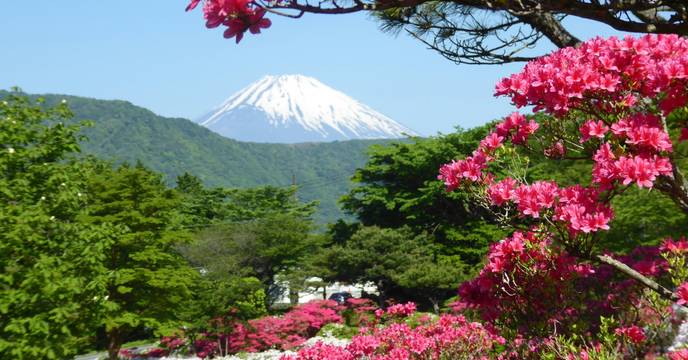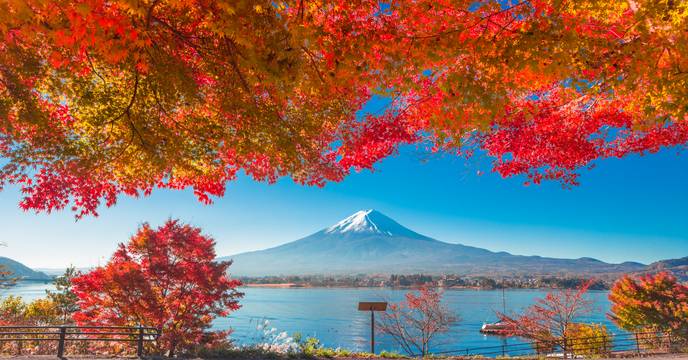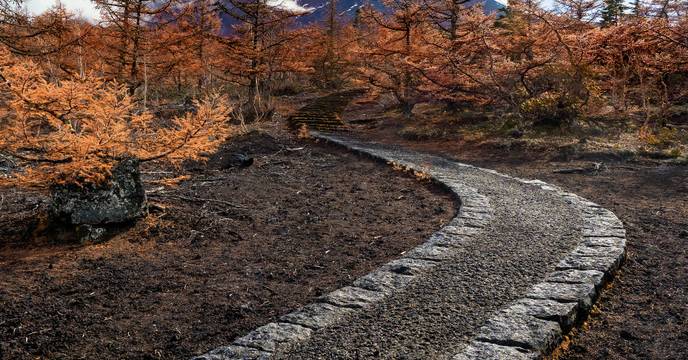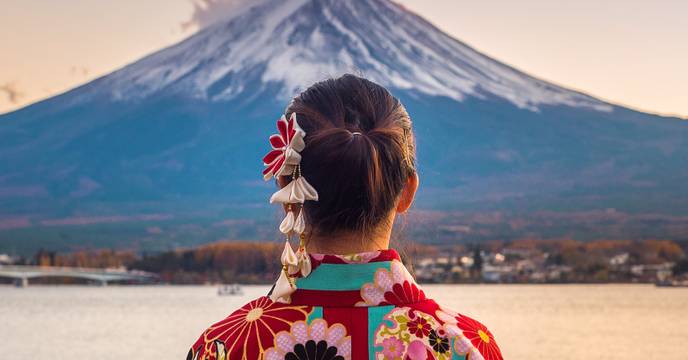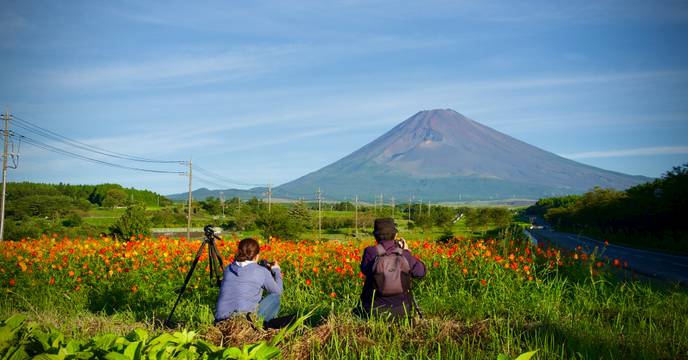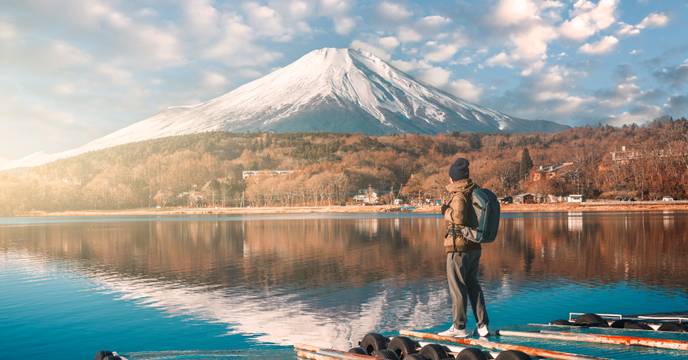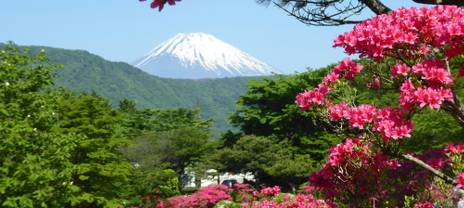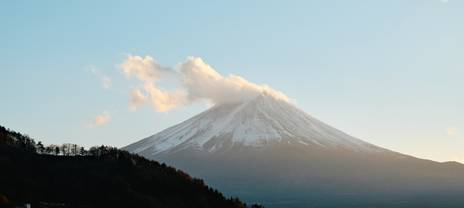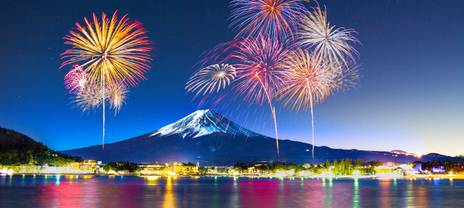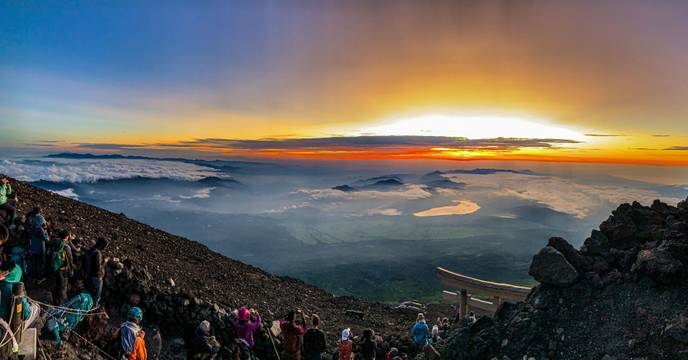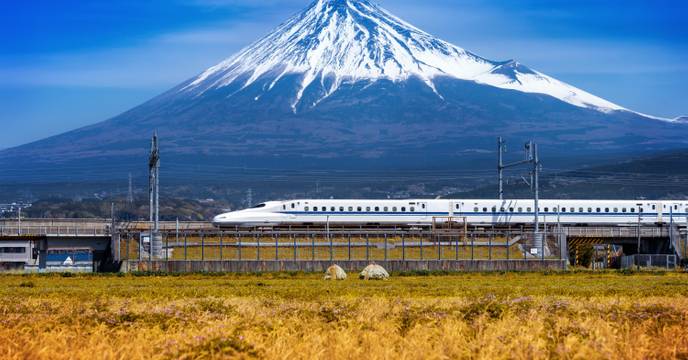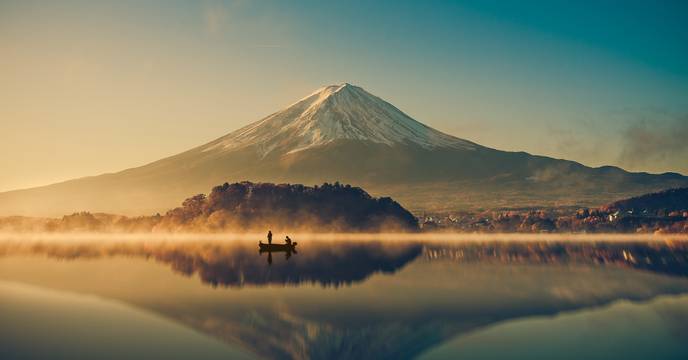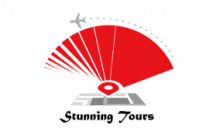
Weather in Mount Fuji
Table of contents
Weather by season
Weather by month
Weather by region
The best time to visit
Travel tips for every weather
Your packing list for Mount Fuji
Weather phenomena
FAQ
Mount Fuji, Japan's tallest and most iconic mountain, is unmissable on your visit to Japan. The weather in Mount Fuji shifts with the seasons, each bringing unique allure and adventures. Whether shrouded in pink cherry blossoms in spring or blanketed in snow in winter, Mount Fuji calls is a photographer's dream. Join TourRadar as we guide you through the seasons, helping you choose the perfect time for your Mount Fuji adventure.
Weather in Mount Fuji by season
Monthly overview of the weather in Mount Fuji
| Month | Avg Temp °C | Avg Temp °F | Rain/Snow |
|---|---|---|---|
| January | -6 to -2 | 21 to 28 | High (snow) |
| February | -7 to -3 | 19 to 27 | High (snow) |
| March | -3 to 3 | 27 to 37 | Moderate |
| April | 1 to 8 | 34 to 46 | Moderate |
| May | 5 to 13 | 41 to 55 | Low |
| June | 10 to 16 | 50 to 61 | High |
| July | 12 to 18 | 54 to 64 | High |
| August | 13 to 20 | 55 to 68 | High |
| September | 8 to 15 | 46 to 59 | Moderate |
| October | 2 to 10 | 36 to 50 | High |
| November | -3 to 5 | 27 to 41 | High |
| December | -5 to -1 | 23 to 30 | High (snow) |
Weather in Mount Fuji by region
Please note that official climbing season is from early July to mid-September
Best time to visit Mount Fuji based on weather
The best time to visit Mount Fuji hinges on what you seek from your journey. For climbers, the official climbing season from early July to mid-September is ideal.
For those looking to capture the beauty of Mount Fuji without the climb, autumn (September to November) provides cool, comfortable weather and the chance to witness the mountain painted in vibrant colors.
Book your Mount Fuji tour on TourRadar TourRadar and experience one of Japan's most unmissable sights.

Packing list for Mount Fuji
Weather phenomena in Mount Fuji
Top-rated operators for Mount Fuji tours
What people ask about Mount Fuji
What's the best season to climb Mount Fuji?
The official climbing season is from early July to early September, when climbing conditions are the safest and the weather warmest.
Can I see the cherry blossoms at Mount Fuji?
Yes, in the spring, you can see cherry blossoms around the Fuji Five Lakes area.
Is Mount Fuji always snowy?
Snow caps the summit from late autumn to early spring, but summer sees the mountain mostly snow-free.
How cold does it get on Mount Fuji?
Temperatures can drop below freezing at the summit even in summer, especially at night.
What should I wear when climbing Mount Fuji?
Dress in breathable layers and wear sturdy hiking boots. Prepare for cold and possible rain, even in summer.
Are facilities open on Mount Fuji during the off-season?
Most facilities are closed outside the July to September climbing season, so plan accordingly.
24/7 Customer Support
Our team of experienced tour specialists have traveled to hundreds of countries around the globe and have decades of first-hand travel experience to share. Contact us now to have all of your tour-related questions answered!
